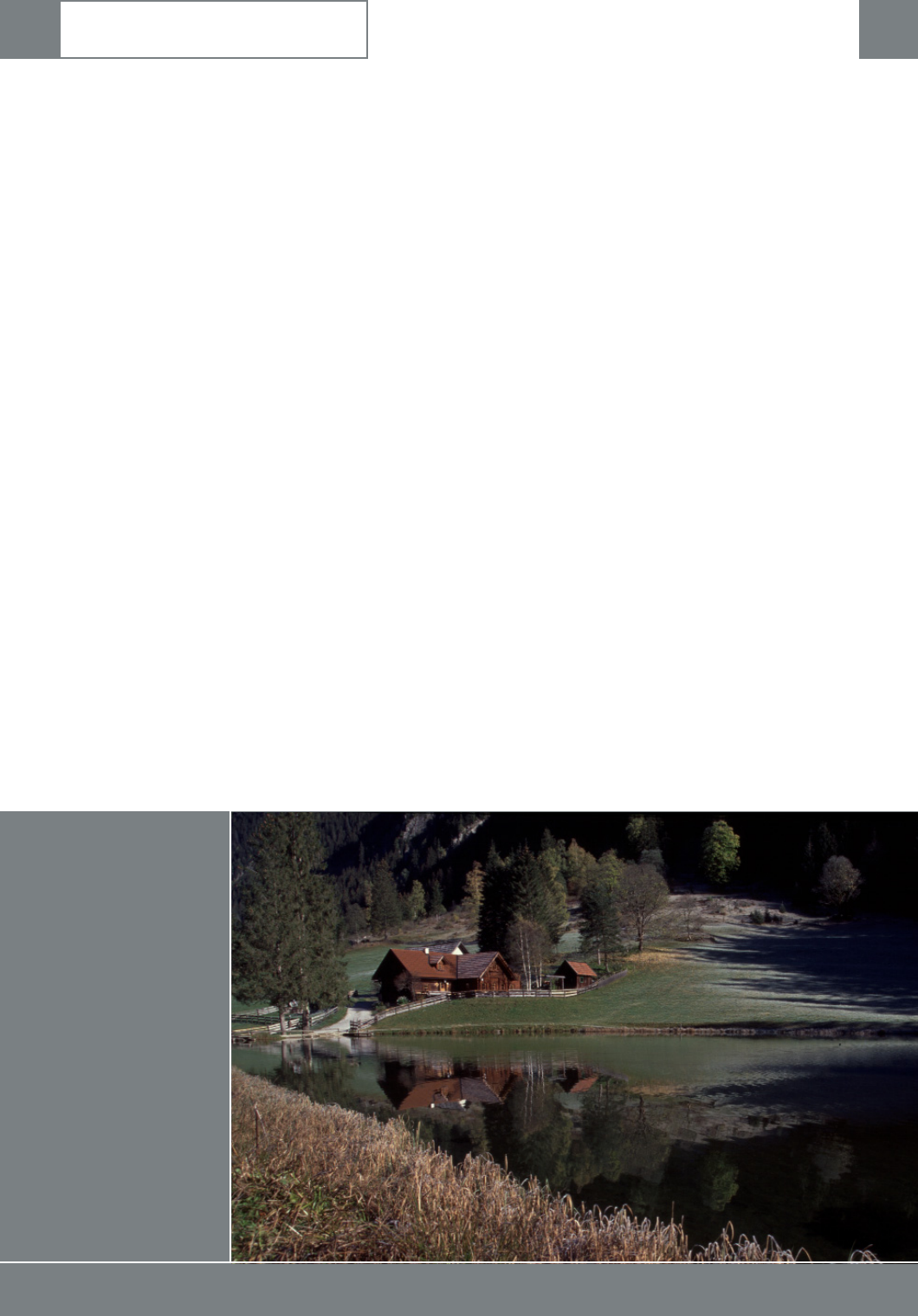
Chapter 7 Leica R-Lenses 9
This is a lens with amazing characteristics. It offers outstan-
ding quality and can be compared very favourably to the
fixed focal lengths. A detailed comparison with the equiva-
lent fixed focal lengths is possible based on the published
graphs in earlier chapters and in the lens data sheets, avai-
lable separately. The reader can do this him/herself.
The comparison with the Apo-Summicron-R 90 mm f/2
ASPH is interesting and does indicate where the advantages
of fixed focal lengths may be found. A careful study of the
properties of the individual lenses does help making the
correct selection. The Apo-Summicron-R delivers at full
aperture (1:2) the same performance as the Vario-Elmarit-R
at the 90 mm focal length at f/4.5.
The Apo lens has a two stop advantage here. The greater
depth of field and the more effective reduction of internal
reflections (smaller lens diameters!) give the pictures with
the Vario lens a smoother quality. With the Apo lens the
sharpness plane is clearly isolated from the rest of the
image and the unsharpess gradient is steeper. Stopping
down the Apo-Summicron-R to 1:4 will make the differen-
ces disappear of course.
In general the fixed focal lengths will be more compact and
offer a higher speed per focal length. Stopped down there
is no longer a big difference and compared to older lens
generations, the zoomlens often has better imagery in the
outer zones of the image.
The images made with the LEICA VARIO-ELMARIT-R 28-90
MM F/2.8-4.5 ASPH have a very good colour fidelity, a very
fine pictorial depth and realism. This is a lens for slide film
and if you have not yet tried slide film, the acquisition of
this lens might be a good incentive to try these films.
The wide zoomrange from 28 to 90 mm highlights another
property of the reflex system: the normal finder screen of
the R8/9 is a bit too dark at the 90 mm position and it is
difficult to focus accurately at the 28 mm position. Here
lies a new job for the engineers at Solms! Focussing at the
wide angle range is often not very critical as depth of field
will cover slight errors. If accurate focus is required, it is
best to focus at 70 mm and zoom to 28 mm (or 90 mm and
zoom to 35 mm).
In this range, focus constancy is abolutely spot on. Current
Leica lenses score high marks in the areas of contrast and
definition and reproduction of very fine detail. These cha-
racteristics can be inferred from the published MTF graphs,
as long as you try not to read too much out of these
graphs. One very critical area where the MTF can not provi-
de information is the propensity to flare in its several
aspects.
LEICA VARIO-ELMARIT-R 28-90 MM F/2.8-4.5 ASPH
image: Oliver Richter












